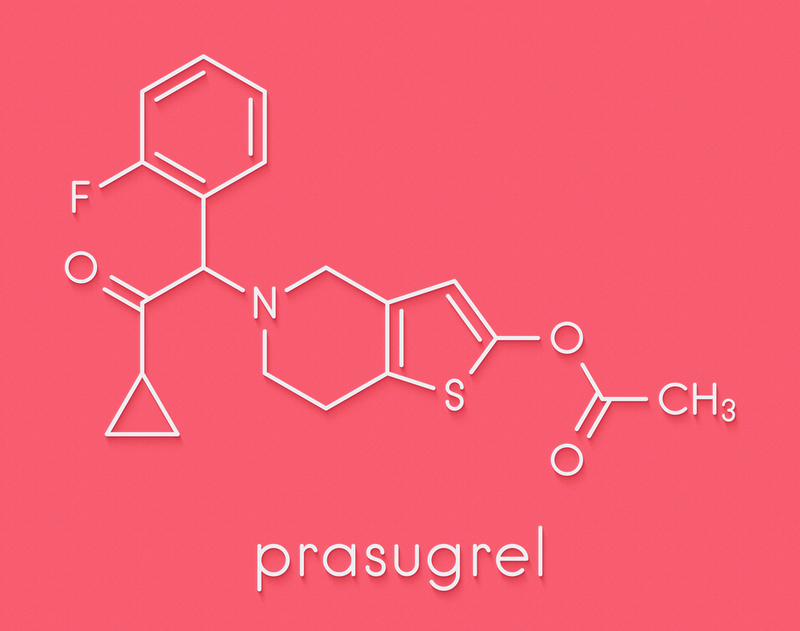Prasugrel cuts ischaemic events in acute coronary syndrome patients
ESC 2019 Press Release Sep 03, 2019
Prasugrel is superior to ticagrelor for reducing ischaemic events in patients with acute coronary syndrome and a planned invasive strategy. The late breaking results of the ISAR-REACT 5 trial are presented in a Hot Line Session on 1st September at ESC Congress 2019 together with the World Congress of Cardiology and published in the New England Journal of Medicine. There was no increase in the rate of major bleeding with prasugrel.

In acute coronary syndromes, a dual antiplatelet regimen with a P2Y12 receptor antagonist plus aspirin is the cornerstone of treatment. Prasugrel and ticagrelor provide greater, more rapid, and consistent platelet inhibition compared to their predecessor clopidogrel. Both drugs are recommended over clopidogrel for 12 months after percutaneous coronary intervention (PCI) in acute coronary syndrome patients with and without ST-segment elevation (STEMI and NSTE-ACS, respectively). Until now, the relative merits of ticagrelor versus prasugrel for the one-year treatment of acute coronary syndrome patients were unknown.
The ISAR-REACT 5 trial tested the hypothesis that ticagrelor is superior to prasugrel in reducing the primary composite endpoint of death, myocardial infarction, or stroke within 12 months in acute coronary syndrome patients intended for an invasive strategy. A total of 4,018 patients were enrolled from 23 centres in Germany and Italy and randomly allocated to prasugrel or ticagrelor.
Patients assigned to ticagrelor received a loading dose as soon as possible after randomisation. In other words, the timing of study drug administration was irrespective of clinical presentation and knowledge of coronary anatomy. In the prasugrel group, the timing of study drug initiation depended on clinical presentation. STEMI patients received prasugrel as soon as possible after randomisation (i.e. they were pretreated). In patients with NSTE-ACS, administration of the prasugrel loading dose required knowledge of the coronary anatomy.
The primary composite endpoint of death, myocardial infarction, or stroke at 12 months occurred in 9.3% of patients in the ticagrelor group and 6.9% in the prasugrel group (hazard ratio [HR] 1.36; 95% confidence interval [CI] 1.09–1.70; p = 0.006).
The incidence of the individual components of the primary endpoint in the ticagrelor and prasugrel groups was 4.5% versus 3.7% for death, 4.8% versus 3.0% for myocardial infarction, and 1.1% versus 1.0% for stroke. Definite or probable stent thrombosis occurred in 1.3% of patients assigned to ticagrelor and 1.0% assigned to prasugrel and definite stent thrombosis in 1.1% versus 0.6% of patients, respectively.
The increase in anti-ischaemic efficacy with prasugrel was not accompanied by a raised bleeding risk. Bleeding (BARC(5) class 3 to 5) was observed in 5.4% of patients in the ticagrelor group and 4.8% of patients in the prasugrel group (HR 1.1; 95% CI 0.8–1.5; p = 0.46).
Principal investigator Professor Stefanie Schuepke of the German Heart Centre Munich said: “In this investigator-initiated, multicentre, randomised clinical trial of invasively treated acute coronary syndrome patients, prasugrel significantly reduced the composite rate of death, myocardial infarction, or stroke compared to ticagrelor with no rise in the rate of major bleeding.”
This article is a news release from European Society of Cardiology (ESC) 2019 Congress. Read the original here.
-
Exclusive Write-ups & Webinars by KOLs
-
Daily Quiz by specialty
-
Paid Market Research Surveys
-
Case discussions, News & Journals' summaries
